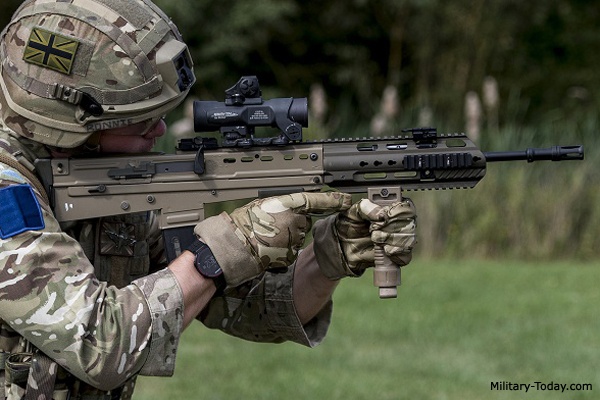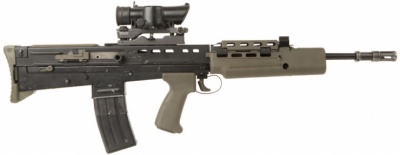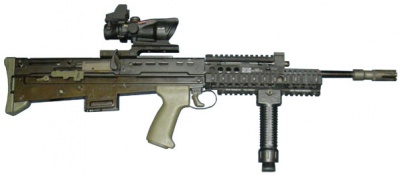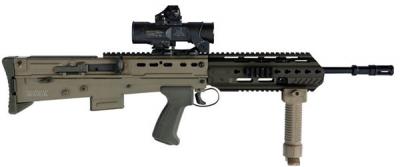
16th Dec 2018
The New L85A3
The L85 has been a standard issue rifle for the British Army since 1987. It’s not a secret to anyone who served during that time and with that rifle, that it was not the easiest rifle to get along with. It had a number of serious design failings that made it unreliable when used in the field. The L85 had enough problems that it warrants its own section titled “Design Flaws” on its Wikipedia page.

The stigma of the L85 is fairly well deserved, as a few of its design flaws were fairly major. For instance, ejected casings would occasionally end up in the bolt carrier (causing stoppages), the trigger group linkage would cause stoppages during fully automatic fire, it was heavier than the L1A1 it replaced, and the tip of the firing pin would snap off, something not easily repairable in the field.
All of this gave the L85 quite a negative reputation that still lingers today and tarnishes its later variants the A2 and now, the A3.
In 2000, Hecklar & Kock were contracted to address the (50+) faults found in the L85 (and L86) after an in-depth investigation. This is where the L85A2 was born.

The L85A2 featured an improved bolt design, a modified cocking handle to deflect casings away from the rifle, as well as a Daniel Defence rail system which allowed the addition of attachments. Whilst, like most firearms, the L85A2 is not a flawless system, it’s a vastly improved and reliable system in the eyes of the many who have served with it.
However, and despite this, the L85’s end of service date is up in 2025 and the platform has begun to look dated and fall behind in today’s modern theatre.
This has prompted a £5.4m investment into the L85 and the eventual issue of what is now, the L85A3, in an attempt to extend its life beyond 2025.
What’s new in the L85A3?

H&K have once again iterated on the L85 and delivered the A3 with changes of varying impact. Primarily, the A3 has transitioned to utilising a “free-floating barrel”. A free-floating barrel makes minimal contact with the rest of the rifle and handguard. This isolates it from shooter movements and impulses during recoil, improving accuracy.
In implementing a free-floating barrel, there was a requirement to redesign the handguard. The new handguard is now much sleeker in design and features a M-LOK attachment interface on the side rails, allowing it to be streamlined when nothing s attached and for a faster attachment system. The top and bottom rails still feature the standard picatinny (20mm RIS) rails.
The A3 also benefits from a full-length rail along the top of the rifle. This allows for a greater versatility of optics, over the A2’s weaver rail system (which transitioned to the picatinny on the foregrip) which would only take specific optics. The A3 upper receiver has also welcomed some design changes which make it easier to maintain and the whole rifle has been given a Flat Dark Earth Cerakote finish, making it all around more durable.
In total the new A3 weighs in at 100g lighter than the A2.
Why upgrade when we could invest in something new?
This is a question that’s asked quite a lot when the A3 comes up in conversation. Why did they invest in the old rifle when we could have bought something entirely new?
It’s apparently incredibly easy to overlook just how expensive outfitting multiple military forces with a new battle rifle is. The initial upgrade from A1 to A2 cost approx. £400 per rifle. It would be impossible to source, purchase and train soldiers on a new weapons platform for less. Not to mention the versatility and advantages of a bullpup rifle across many types of conflicts, when compared to a traditional rifle.
If the decision were made to invest in an entirely new platform, the money for it would have to come from somewhere. More than likely, it would come at the expense of soldiers on the ground, or the other gear they have available to them.
That is why The British Army is still using the L85 as it’s primary platform.
